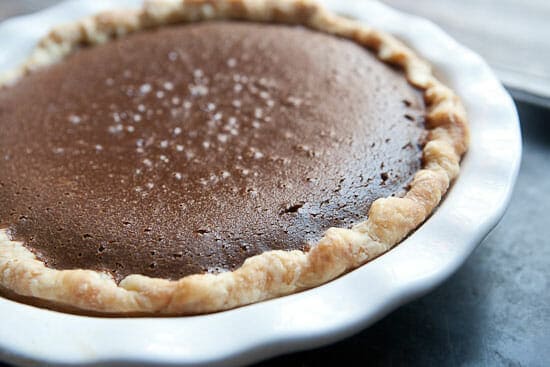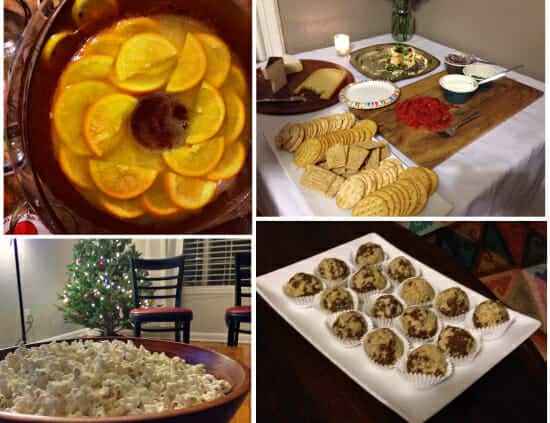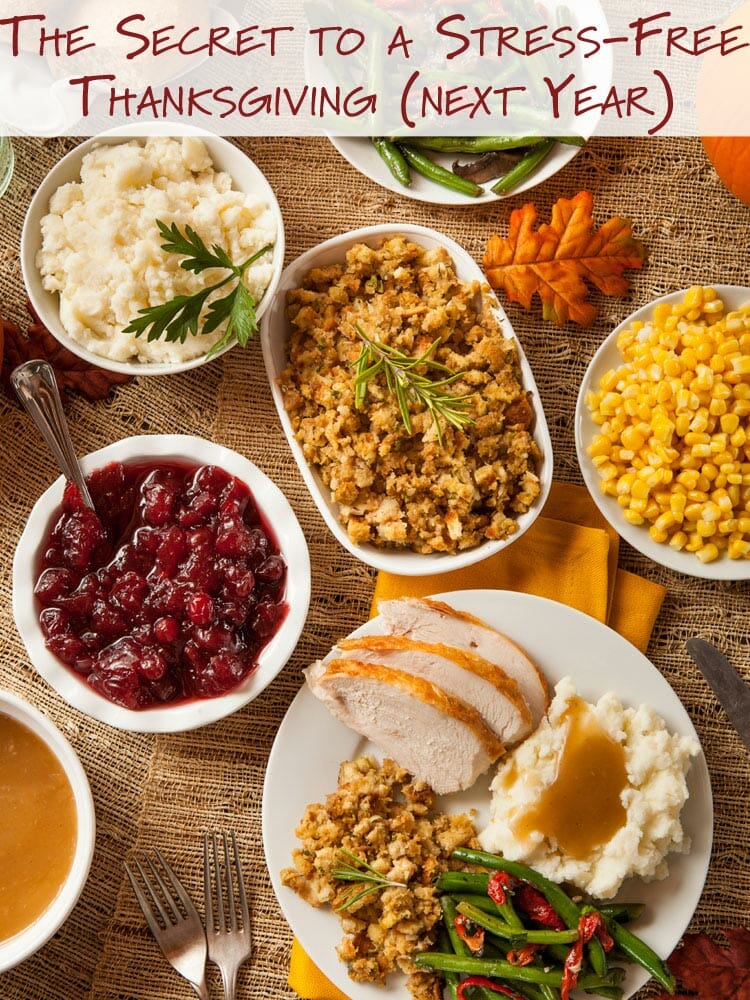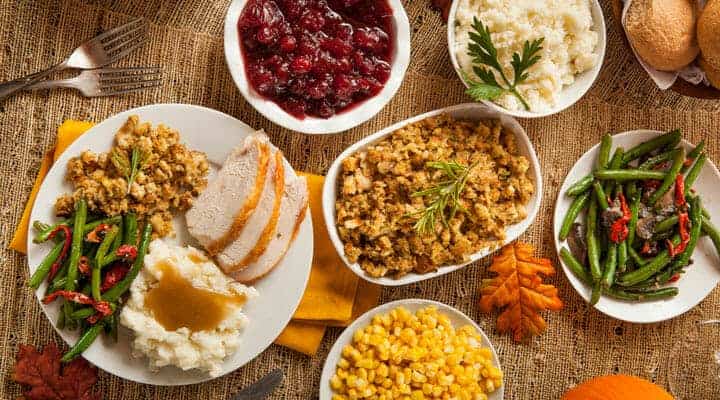Don’t worry. This is not a posting error. I am posting a guide to a stress-free Thanksgiving the week after actual Thanksgiving. This is on purpose.
Every year I get a ton of questions from ambitious home cooks, many of whom are tackling a big meal like Thanksgiving for the first time. They all want to know how to succeed and, trust me, I really want to help them!
My general advice in the moment is to tell them to relax, not stress about any one part too much, and try to have fun with friends and family.
I stick by this advice!
But the reason I stick by it is because there is very little you can do from a cooking perspective to prepare yourself for a huge undertaking like Thanksgiving at the last minute. So you might as well crack open a beer and try to enjoy the experience.
The Hard Truth
If you only cook a full bird once a year, and that bird happens to be an 18 pound bird, you are probably in for a rough ride.
If you only make a pie once a year, and you want that pie to be from scratch, delicious, and pretty, you will most likely experience a spike in blood pressure.
If you only throw a party once a year, and that party includes lots of high maintenance dishes, drinks, and people… then there will be cursing.
The truth is that the skills that make for a successful Thanksgiving aren’t teachable in a list or in any sort of magazine article (even though I have frankly written such articles trying my best to help).
That’s why now is the best time to get to work on preparing for your stress-free Thanksgiving next year. As with anything, it’s really all about practice and if you break it down into parts, you can practice these things at your convenience for the next 12 months and then you’ll stroll into next year’s holiday season with a weight off your back.
The good news? Practice in this case really just boils down to cooking a lot. So it’s fun… and delicious.
The Skills You Need
As the great action dude Liam Neeson would say, “I have a very specific set of skills.”
For me that set of skills unfortunately does not involve dispatching bad guys, but it does include all the things I need to set up a Thanksgiving feast. Here’s the short list of things that can help you prepare for next year along with some practice ideas!
Bird Talk
No matter how you do it, cooking a huge bird is a tough thing to do well. Obviously there are millions of things you can read on the Internet to hopefully put you on the right track, but the only way to really get it down is to practice.
The good news is that you don’t necessarily need to cook a whole turkey to get the idea. Roasting chickens occasionally throughout the year will give you a good feel for how a whole bird should cook.
Five Spice Chicken – This is an easier roast chicken and a good starter recipe that just involves a simple rub and glaze. It also walks through some stock making which is great practice for Thanksgiving!
If you want even more help with roasting, my book (Love Your Leftovers) has an entire chapter devoted to roasting chickens. It’ll get you all set for next year.
Pie Practice

Some people would argue that the post dinner pie is maybe the most important part of Thanksgiving. It’s the one time of year that a lot of people try their hand at homemade pie.
And that unfortunately results in a lot of bad pies.
Making excellent pie crust is pretty tough work, but making really good pie crust isn’t that hard. With a few practice pies throughout the year for special occasions, you can get it down without a problem.
A Spring Rhubarb Pie – Just go ahead and put it in your calendar to try and make a rhubarb pie in the spring when rhubarb is in season. This is great practice for any fruit pie and you get to practice making a double crust!
Pumpkin Anytime Pie – I have no idea why a good pumpkin pie is only popular over Thanksgiving. I could see having it for many occasions. This chocolate pumpkin pie adds a nice twist to the classic.
Party Time

To be honest, making the pie and making the turkey are the two most skilled aspects of Thanksgiving in my opinion. Many of the other recipes are pretty straightforward assuming you have some cooking experience.
Mostly, a successful Thanksgiving comes down to planning. Stuff like knowing what you can make in advance, how much of each dish to make, and even planning oven space. All of that stuff is very important.
Again though, you just have to practice it! That’s not to say that you have to throw huge rager parties throughout the year, but planning a few smaller low key get-togethers can make hosting a larger thing like Thanksgiving seem like not quite as big of a deal.
Host a Cocktail Party – This is easy and fun. Once or twice a year, Betsy and I will have a group of people over for a few fancy cocktails and appetizers. It’s a good way to catch up with friends and people love an excuse to come drink fancy drinks and eat small nibbles.
Have a fun Brunch – If you’re feeling ambitious you could try something like my chicken and waffles brunch, but it doesn’t have to be that crazy. Just making a big stack of really good pancakes with some fruit salads and stuff. It’ll be a big hit.
Having a few different dishes during a brunch party can help you plan out amounts and cooking order (don’t cook the pancakes first).
Create a Theme Party – This doesn’t have to be over-the-top, but something that your friends can look forward to each year is always fun. Every year Betsy and I host a huge deep fry party and it’s always a good way to check in on our party supplies and try out a few new recipes. Last year we had around 40 people at our deep fry party so it helps to put things in perspective!
What Are Your Tips?
Did you struggle with any parts of Thanksgiving this year?
Do you have any long term things you can do to be better prepared for a less stressful holiday next year? Would love to hear other ideas in the comments!



Rachael
I love that you quoted “Taken”!!
Will C.
Nick,
My wife and I have found a pretty consistent method of making a successful (unstuffed save for an onion and several sprigs of poultry seasoning) turkey that is great for the novice host. We give it a good wash, apply a healthy buttered-fresh-poultry-seasoning rub (fresh chopped sage, rosemary, thyme etc.), and then wrap it in buttered brown paper, folded over the top and tied at the ends with string to seal. This is called the paper bag method, but finding one the size of a 20 lb turkey is a challenge nowadays so we use brown packaging paper. Sticking the thermometer in at the end of about 15 min per lb, @ 325F, the bird was at 185F in the breast – a little over done by the book, but it came out perfectly. Somewhat surprisingly, the turkey comes out with a nice roasted color and is by far the most succulent of turkey I have had in my life. If you are not a fan of “dry turkey”, you must give this a go! If you or your readers would like something more specific, I would be happy to write something up for ya. Next year I plan to do it stuffed.
All other points, planning ahead, managing oven space (if you have one oven cook some the night before), PRACTICE your pies a few weeks in advance to test and perfect your recipe and method (this will DAZZLE your guests), and most importantly enjoy yourself and take your time. It’s your Thanksgiving, too!. To up the ante next year, I have just invested in a food processor (!!!)
Cheers,
Will
PamelaR
My mother couldn’t make a pie crust well to save her soul, so she didn’t. She told us that we could have pumpkin pie all year round if she didn’t have to make the crust and, besides, the crust had too many calories. We called her pumpkin custard “pumpkin guts.” Fun as a kid but even smarter as an adult watching my calorie intake. She made hers in a 9×12 glass casserole dish and I make my pumpkin pie custard (the filling) in Corning 16oz ramekins. The ramekins make a nice individual presentation that I dress up. Not a single person has ever asked me where the crust was. Either way, pumpkin custard (pie guts) are a terrific dessert all year long.
Nick
Ha! I love that idea Pamela. Thanks for the comment!
Janet S
I do not agree that roasting a turkey is so difficult, as long as you don’t think it needs to look like a bronzed god. Opening the oven all the time to baste a bird to perfection is what destroys the timing of the roasting because the oven is constantly working to get back up to temperature.
I started my 18 pound turkey this year at 450 degrees for half hour, and within a total of 3 hours, it was done. I didn’t believe the temperature gauge and left it in a bit longer, but once it was out of the oven and resting, I was able to warm up three dishes in the oven and make gravy.
I brined my turkey for 12 hours prior to roasting and I don’t know if that helped speed up the roasting, but it did produce a moist bird that truly did not require basting.
Nick
Thanks for the comment Janet. As far as I know brining wouldn’t speed up cooking, but starting it at a much hotter 450 and then turning it down definitely will. I do that also and it shaves hours off the total cooking time.
Bradley Hague
The secret for us is in the planning. I may be the main chef in our house, but it’s Emily that really runs the kitchen. She had multi-day, hour by hour plan for everything that we needed starting the Sunday before . That, more than anything else was our secret to a stress free Thanksgiving. It meant two nights of prep and a full day of cooking, but kept the stress to a minimum. I agree though that aside from planning, the only other way is practice.
Btw: that stuffing recipe is ridiculously good. I cut the recipe in half and am completely regretting it. We burned through the leftovers in less than a day!
Adam
My wife and I just celebrated our first Thanksgiving as a married couple by hosting our combined families at our house. I made a 20-lbs Turkey in my 22-quart Roaster Oven.
I brined the Turkey for about 18 hours ahead of time and put it in the roaster at 8 AM. The only thing that I didn’t count on was that my temperature knob might not be accurate! I set the roaster for 350°F, like the recipe I was following said to do. However, while the recipe said that my 20-lbs bird should take 4.5 hours to cook, I was up to 120°F in about 2 hours! Luckily, I was monitoring the internal temperature with a meat thermometer.
The lesson I’m taking away from this is that my roaster runs hotter than the knob indicates (even after I turned the temp down to 150°F for the next two hours, my bird still got up to 160°F). Luckily the bird came out moist and delicious!
My recommendations is that everyone enjoy the process and keep track of your dishes. You will have plenty of time to spend with the family and just check up on the cooking if you plan appropriately. Also, cook your stuffing in a Crock Pot Slow-cooker. You will have awesome stuffing in about 2 hours that way, with very little work. The more roaster-ovens and slow-cookers you use, the less you will have to worry about basting or dry food.
Thanks for the great blog, I’ve enjoyed many of your recipes!
Nick
Thanks for the comment Adam! Yea… I think it’s pretty common for slow cookers and roasters to run a bit hot which is silly. Sounds like it worked okay for ya though!
Kath the Cook
half a recipe or full recipe = same amount of work. If you wind up with too much leftovers, you can always freeze the unbaked (or baked) dressing/stuffing.
wonderful in stuffed pork chops for a quick dinner later on (thawed out ahead of time).